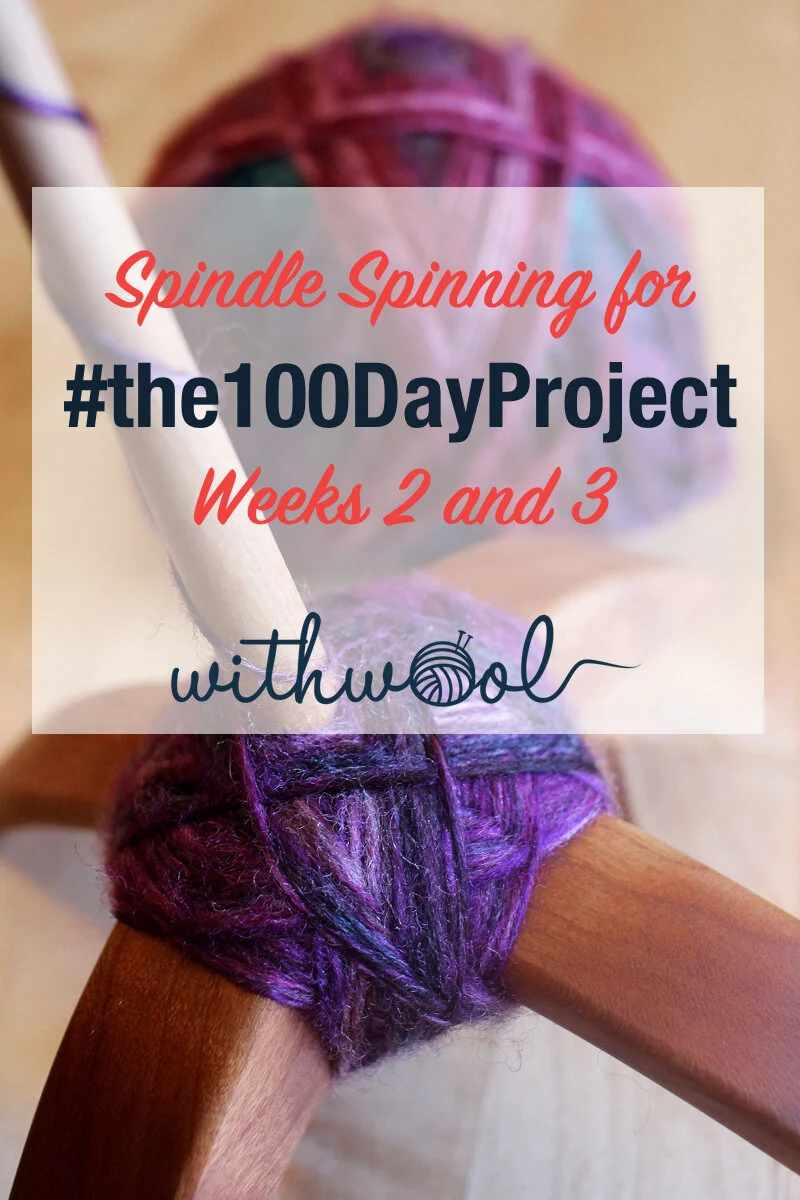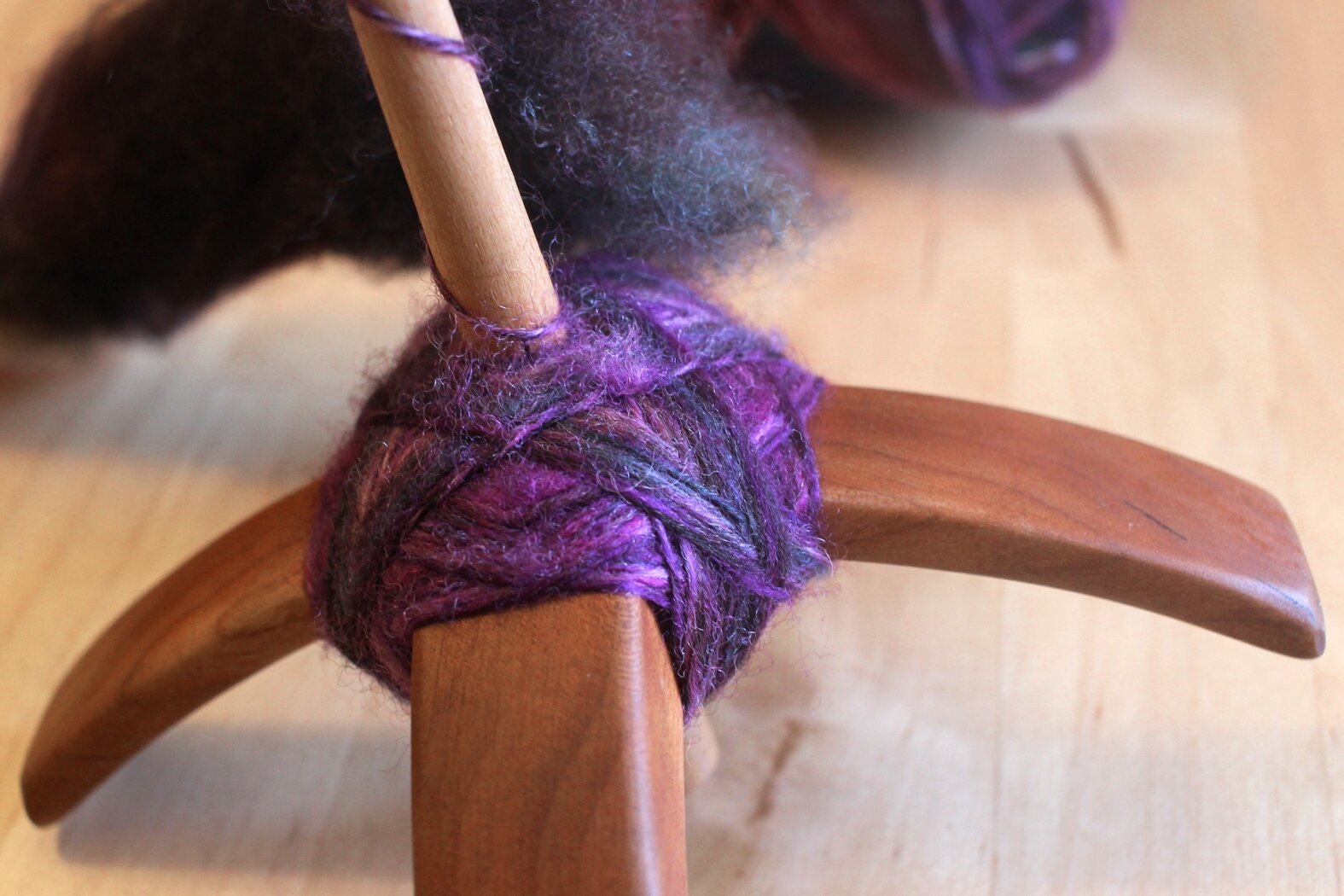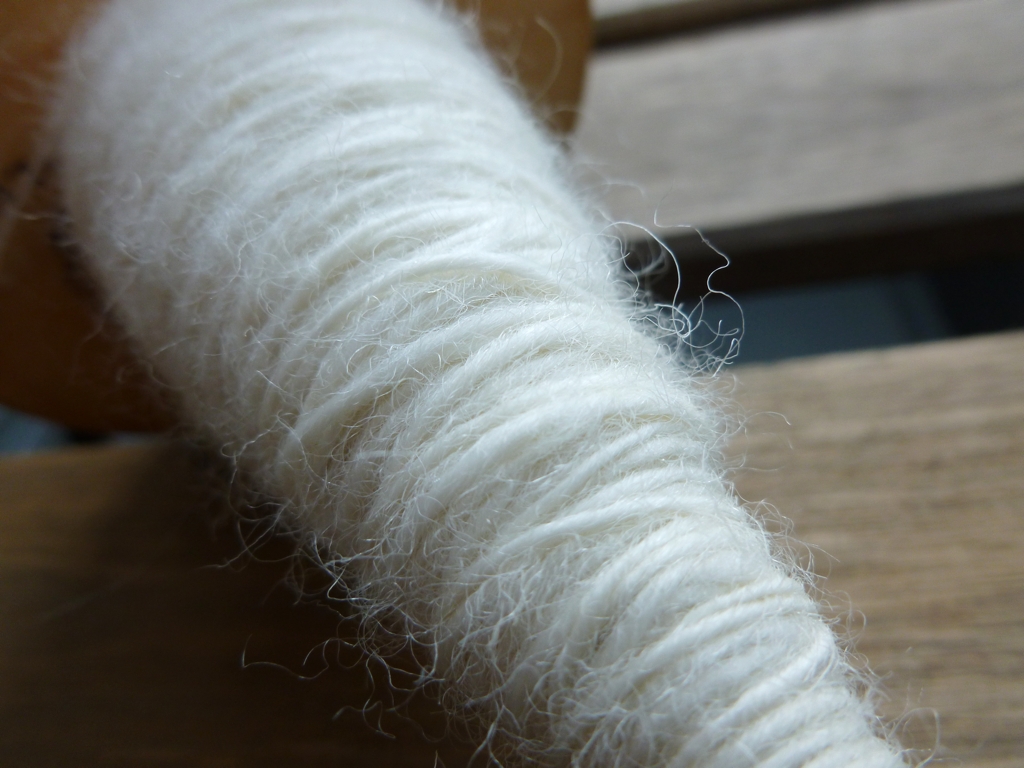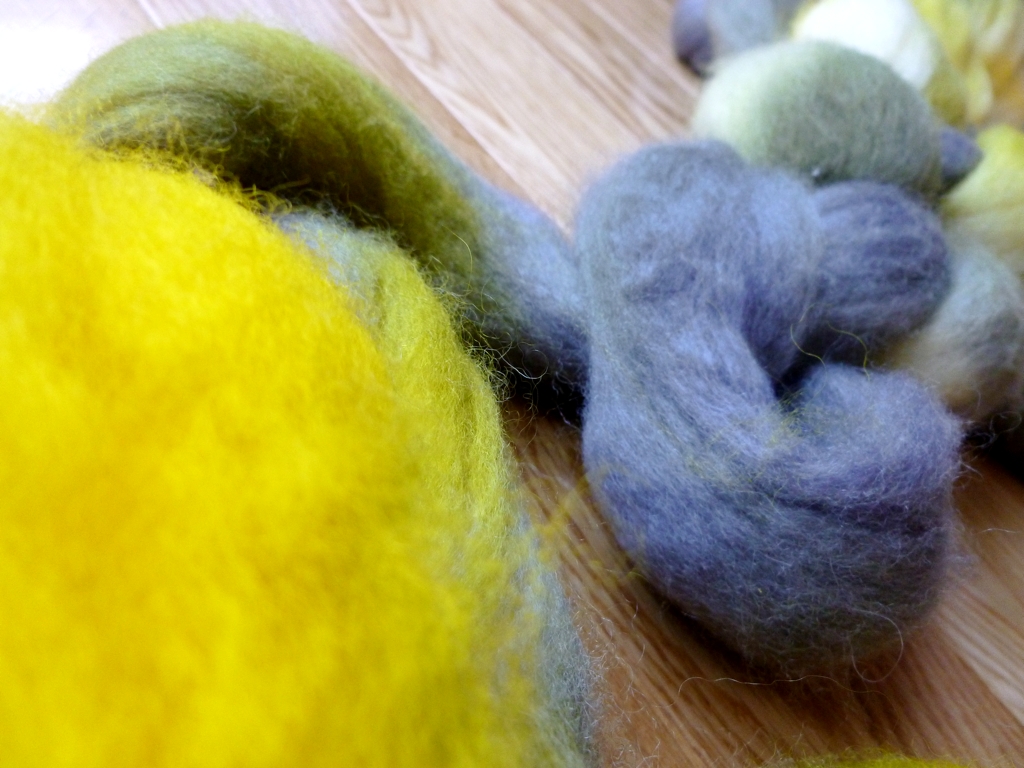#the100DayProject Weeks 2 and 3
/I’ve joined up with #the100DayProject this year with the goal of spinning every day. Writing down a daily log of my progress is an easy way for me to stay accountable, follow though, and plan what to spin next during this project.
If you’re just joining me, here’s what I did to prep as well as my first week of spinning.
Week 2
April 14 (Day 8): Yep, still spinning. In an attempt to make drafting a little easier, I fluffed up the roving by pulling it out to the sides. It’s still all in one piece, but isn’t compacted. Way easier to work with now.
April 15 (Day 9): Had the thought that, if I was working with my wheel, I’d be plying right now instead of still drafting the first single. That’d be in a perfect world though with no interruptions. In this world, past experience has shown that I wouldn’t be spinning at all. I have a new found appreciation for all those women who made a living spinning yarn and knitting garments and keeping the home going while taking care of children.
April 16 (Day 10): Spent most of my spinning time with a lovely section of teal. Well, I like the color. The single kept snapping and pulling apart which I’m not sure was on me or the fiber. Maybe a little bit of both. Today probably takes the cake for the most breaks and joins (not all successful) since Day 1.
April 17 (Day 11): The single on the spindle looks so different from day to day! Even on days where I only get a few minutes to spin, the color and wrap changes so much that it’s like picking up something new to work on. This is not to say that I don’t occasionally get bored and wish the process was going faster. I do. So it’s definitely a good thing I picked fiber with a bit of variety or I’d seriously be thinking about switching things up right now.
April 18 (Day 12): I kept looking at the quickly shortening length of roving and wondering if today would be the day I spun it up. Nope.
April 19 (Day 13): Yay! I finished spinning the first single for the 2-ply this morning. I probably should have paced myself and spun in smaller chunks throughout the day because my shoulder hurts now. Most of today’s spinning was accomplished while sitting cross-legged on the ground which doesn’t leave much height for a lengthening single. So I held my drafting arm way up over my head, and that’s not the most ergonomic of positions. But it’s done. I’m taking a break for the rest of the day. Prepping a leader and removing the spindle can wait until tomorrow.
April 20 (Day 14): I needed that mini break last afternoon and night. My shoulder feels better, but still a little tender. Fine to draft more yarn though.
Pulled the spindle apart and out of the cop, which took more effort than I expected, and finagled the leader out of the center. The cop looks good and is mostly holding together besides from a few fly away strands from the last wraps. I’m hoping it’ll hold up to being a center pull ball during plying...and that the joins will hold up too.
I put the spindle back together and tied a new leader using sock yarn. Then I spun a few yards and only a few yards. The bulk of today’s crafting time went to finishing a last minute baby knit that I need to get in the mail ASAP. Kept the streak going though.
I feel like this would be the time to say something profound about completing another week of #the100DayProject. I got nothing. All I’m doing to making it easy for me to spin in bits and pieces every day without adding too many rules or expectations. It helps that kiddo is my spinning buddy now.
Week 3
April 21 (Day 15): Spent half the time I would have been spinning sewing buttons on a baby sweater. Turned out so cute. I did get a few more yards wound on the spindle in the afternoon.
After spinning the past week on a very full spindle, the last two days have been an adjustment. I have to be way more careful to keep the spindle turning because it doesn’t have enough weight on it to keep spinning as long as it did with an extra ounce or when it gets jostled by a stray toddler foot.
April 22 (Day 16): I got to spin for a few minutes outside today while my spinning buddy dug holes in the dirt. Good times.
April 23 (Day 17): Twist, draft, wind, twist, draft, wind... I am feeling very firmly in the middle of this project. Not the halfway done middle where you have the ending to look forward too. It’s the beginning is over and the end is still a long way off kind of middle. The same could be said for this half spun fiber. If the past few weeks are any indication, I have at least another week of work spinning this single before I can start plying. One day at a time and it’ll get done.
April 24 and 25 (Day 18 and 19): Doing all the things these two days - from grocery shopping to virtual hangouts to lots of cooking - tired me out and didn’t leave much space for spinning. I got a few turns in each day and called it enough. If the single broke, the single broke and I was done.
April 26 (Day 20): Places you can spin - social distancing edition:
1. At the kitchen table while your spinning buddy finishes breakfast.
2. At the kitchen table after lunch to get a quick video.
3. While sitting in the bathroom waiting to assist in grouting tile.
4. Pacing through the living room while your spinning buddy creates sculptures of rubber food.
April 27 (Day 21): Got a few minutes of spinning in today. Just enough to say that I hadn’t skipped a day. It’s going to take me way longer than a week to spin the rest of this single at the rate I’m going now.


















































































